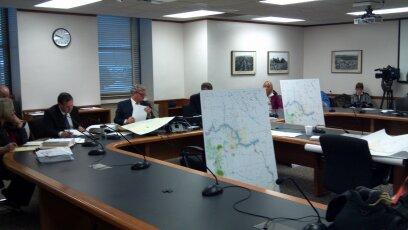DSU’s Stoxen Library to host “Civil War 150 Traveling Exhibition” Dec. 30-Jan. 27
Shanna Shervheim, interim associate director of communications, 701-483-2595
The American Civil War was the bloodiest in U.S. history, taking the lives of 1.5 million people and tearing the country in two. Experience the conflict through the eyes of major political figures, soldiers, families and freedmen at the “Civil War 150 Traveling Exhibition” at Dickinson State University’s Stoxen Library Dec. 30-Jan. 27.
A grand opening reception for this nationally acclaimed exhibition will be held at the library on Monday, Jan. 6 from 3-7 p.m. During the reception, Civil War era refreshments will be served including standard military fare hard tack. The public is invited to view the exhibition at any time during its month-long residency: weekdays from 8:30 a.m.-4:30 p.m. (Stoxen Library is closed New Year’s Day.)
The Civil War was one of the most transformative periods in U.S. history. After long-simmering sectional tensions led to seven slaveholding states seceding, the ensuing political strife gave way to war in April 1861. Through letters, personal accounts, and images, the exhibition portrays how people grappled with the end of slavery, the nature of democracy and citizenship, the human toll of war, and the role of a president during wartime.
“This wonderful exhibition has material that will appeal to both long-time Civil War buffs and to people just now learning about the war,” said Dr. Jim McWilliams, professor of English and co-coordinator of the exhibition. “I especially hope that teachers will schedule field trips with their students to tour the exhibition.
“Civil War 150” is a traveling panel exhibition that was developed by the Gilder Lehrman Institute of American History in partnership with The Library of America and made possible through a grant from the National Endowment for the Humanities. Stoxen Library, a winner of this competitive, prestigious grant, is one of only 50 sites nationwide and the only site in North Dakota selected to host the exhibition.
“We are very excited to have been chosen as the North Dakota site to host this exhibition,” said Rita Ennen, director of the Stoxen Library and co-coordinator of the exhibition. “The use of primary source documents, such as letters and photographs, conveys an intimate feeling as we experience the war through the eyes and ears of those who lived it.”
In addition to the “Civil War 150” exhibition, library guests also can peruse displays of items from Stoxen’s collection of Civil War materials, which includes an impressive collection donated by the estate of historian James D. MacNair, as well as the Civil War era Army artifacts in the Aleck Dvirnak collection.
To further explore the Civil War era, a series of events will be held at DSU during the month of January. All events are free and open to the public.
- Jan. 6, 3-7 p.m., Stoxen Library, exhibition grand opening hosted by Stoxen Library Director Rita Ennen. Refreshments will be served.
- Jan. 15. 7 p.m., Beck Auditorium, Klinefelter Hall. Professor of English Dr. Jim McWilliams will give a presentation about the roles two famous writers played in the Civil War entitled “Mark Twain & Ambrose Bierce in the Civil War.”
- Jan. 22, 12 noon, Stoxen Library. The DSU History Society members will give a presentation about their trip to Gettysburg.
- Jan. 22, 7 p.m., Beck Auditorium, Klinefelter Hall. Assistant Professor of History Dr. Frank Varney will give a lecture about the impact of the war on American society entitled “The American Civil War: Defining a Nation.”
- Jan. 28, 7 p.m., Beck Auditorium. Assistant Professor of Music Dr. Jimmy Leach will lead the DSU music faculty in a recital entitled “Spirituals, Ballads, and Patriotic Music from the Civil War.”
- Jan. 29, Beck Auditorium, Klinefelter Hall. Dr. Varney will host a screening of the documentary “Love and Valor: One Couple’s Intimate War Letters.”
“We hope that through the exhibition and related programming, visitors will explore the meaning of the Civil War in new and more personal ways,” Ennen said.
For more information about the exhibit or its associated programming, contact Rita Ennen at (701) 483-2883 or Jim McWilliams at (701) 483-2145.







